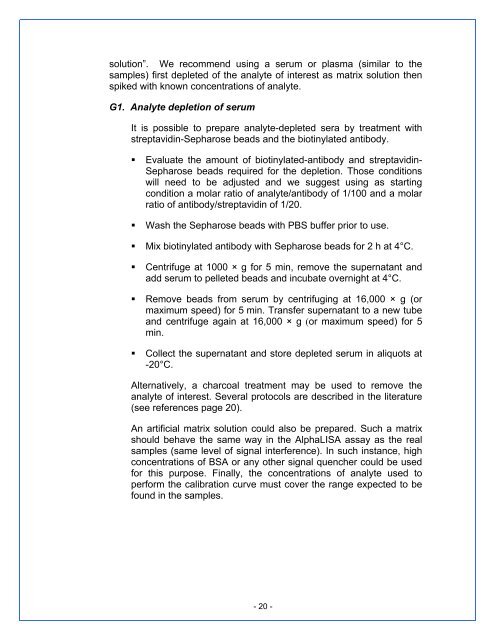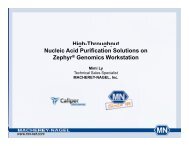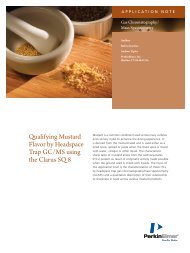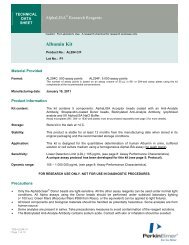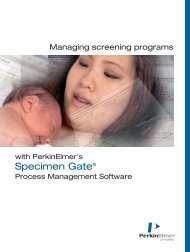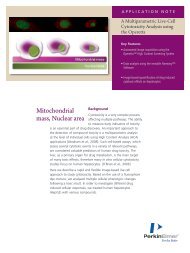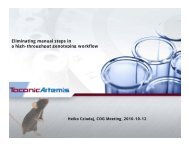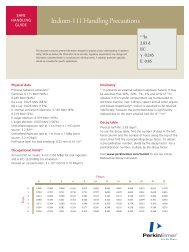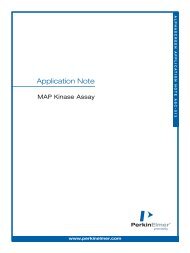AlphaLISA Assay Development Guide - PerkinElmer
AlphaLISA Assay Development Guide - PerkinElmer
AlphaLISA Assay Development Guide - PerkinElmer
Create successful ePaper yourself
Turn your PDF publications into a flip-book with our unique Google optimized e-Paper software.
solution”. We recommend using a serum or plasma (similar to the<br />
samples) first depleted of the analyte of interest as matrix solution then<br />
spiked with known concentrations of analyte.<br />
G1. Analyte depletion of serum<br />
It is possible to prepare analyte-depleted sera by treatment with<br />
streptavidin-Sepharose beads and the biotinylated antibody.<br />
• Evaluate the amount of biotinylated-antibody and streptavidin-<br />
Sepharose beads required for the depletion. Those conditions<br />
will need to be adjusted and we suggest using as starting<br />
condition a molar ratio of analyte/antibody of 1/100 and a molar<br />
ratio of antibody/streptavidin of 1/20.<br />
• Wash the Sepharose beads with PBS buffer prior to use.<br />
• Mix biotinylated antibody with Sepharose beads for 2 h at 4°C.<br />
• Centrifuge at 1000 × g for 5 min, remove the supernatant and<br />
add serum to pelleted beads and incubate overnight at 4°C.<br />
• Remove beads from serum by centrifuging at 16,000 × g (or<br />
maximum speed) for 5 min. Transfer supernatant to a new tube<br />
and centrifuge again at 16,000 × g (or maximum speed) for 5<br />
min.<br />
• Collect the supernatant and store depleted serum in aliquots at<br />
-20°C.<br />
Alternatively, a charcoal treatment may be used to remove the<br />
analyte of interest. Several protocols are described in the literature<br />
(see references page 20).<br />
An artificial matrix solution could also be prepared. Such a matrix<br />
should behave the same way in the <strong>AlphaLISA</strong> assay as the real<br />
samples (same level of signal interference). In such instance, high<br />
concentrations of BSA or any other signal quencher could be used<br />
for this purpose. Finally, the concentrations of analyte used to<br />
perform the calibration curve must cover the range expected to be<br />
found in the samples.<br />
- 20 -


